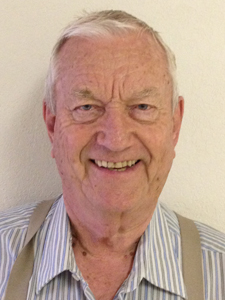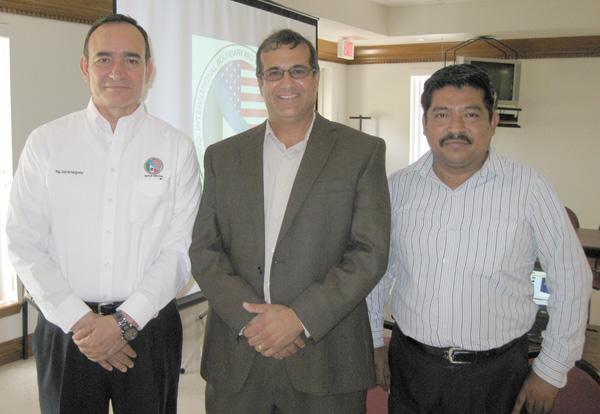- La Feria Community Holds Succesful Business Mixer Event
- Little Nashville to Take Place in Downtown Mercedes
- Lions Basketball Captures District Gold
- La Feria ISD Students Compete in Regional Chess Tournament
- Lions End First Half of 32-4A on a High Note
- La Feria ISD Held Another Successful Parent Conference
- Strong Appearance for Lions at Hidalgo Power Meet
- LFECHS Students Get to Meet Local Actress
- Students Participate in Marine Biology Camp
- Two LFECHS Students Qualify for All-State Band
Public Forum Hosts International Seminar
- Updated: October 2, 2015

Bill Keltner
United States and Mexican speakers share program
The scheduled August meeting of the Lower Rio Grande Citizens Forum of the United States International Boundary and Water Commission (USIBWC) truly lived up to its namesake–International. Water control officials from both sides of the border came to listen, contribute and seek cooperation in dealing with a new threat to the waters of the Rio Grande affecting this fragile lifeline of Mexico and the United States. The new threat concerns not only water safety, flooding and conservation, but takes on a new security aspect as the speakers stressed.
Rodolfo Montero, Citizens Forum Co-Chair and Area Operations Manager/ USIBWC welcomed the audience and introduced the first speaker: Aaron Wendt, Natural Resources Specialist, Texas State Soil and Water Conservation Board from Temple, Texas.

Concerned citizens listen to update on conditions that affect conservation and flood control on the Rio Grande.
Wendt got right into his subject. He explained that his Texas State Soil and Water Conservation Board is charged with improving border security and ecosystem function of the Rio Grande through invasive Species Control–a big order.
In order to help meet the Texas Governor;s border security priorities, the 84th Texas Legislature, in 2015, directed his TSSWCB, through Senate Bill 1734, to develop and implement a program to eradicate Carrizo cane along the Rio Grande. That means, he explained, that they must develop a ecosystem-based approach to control this threat to the health of riparian ecoystems in the southwestern United States. Carrizo cane is a noxious species that consumes precious water to a degree that it threatens water supplies for agricultural and municipal water use for the entire Texas/Mexico 1,255-mile Rio Grande international border. The Mexican counterparts of the USIBWC were just as attentive to his words as the Texans. Wendt outlined the possible biological, chemical, mechanical and cultural control they might integrate in the Carrizo Cane Eradication Program.
Not only the water woes, but also law enforcement problems arise from the plant The speaker said that large dense stands now occupy the banks and floodplains of the Rio Grande, thwarting laws enforcdement efforts along the international border, impeding and concealing the detection of criminal activity, restricting law enforcement officers’ access to riverbanks, and impairing the ecological function and biodiversity of the Rio Grande.

Speakers at International Boundary and Water Commission Public Forum: (l-r) Ing. David Negrete Arroyos, Mexico representative; Rodolfo Montero, USIBWC Area Operations Manager; Ing. Alfonzo Carmona, Mexico representative from Reynosa, Tamaulipas.
The next two speakers reinforced the words of guest speaker Aaron Wendt. Raul Sesin, P>E.;CFM, General Manager, Hidalgo County Drainage District No.1, spoke about progress made by the 2012 Hidalgo County Bond Projects. He said, “We are planning constantly for a 100-year storm, including hurricanes or any other type of flooding.”
Ing. David Negrete Arroyos, Representative of CILA,the Mexican equivalent of the USIBWC based in Reynosa, Tamaulipas. He was joined by Ing. Alfonzo Carmona.
Both speakers stressed their interest in what is being done in our area, and that Mexico is party to a three-nation border control pact. (The United States, Mexico and Canada)
Montero served as interpreter for the speakers. They received a round of applause at the end of their remarks.
Rodolfo Montero closed the meeting with progress being made in flood control in Harlingen and Cameron County. “Major work has been finished in Treasure Hills area and the Arroyo Colorado which flows Through Harlingen.
Anyone wanting information on the meeting or the date and dates of the next LOWER RIO GRANDE CITIZENS FORUM can call Rodolfo Montero at 956 565 3150.


